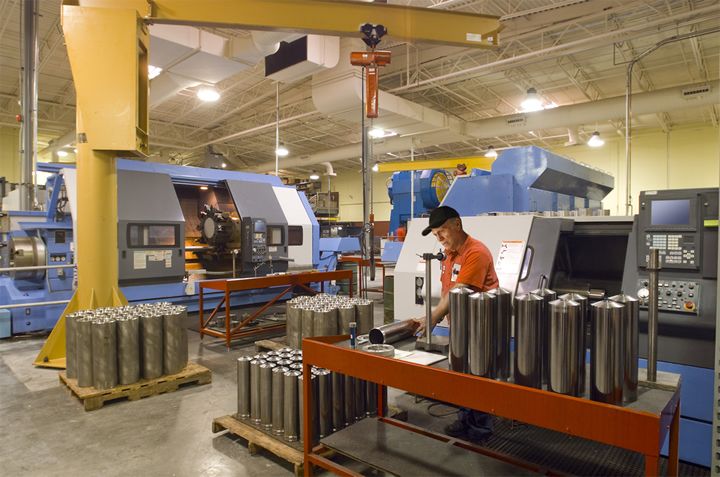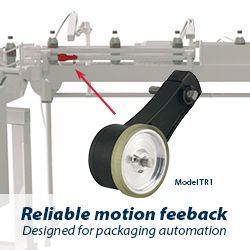This article explores how manufacturers can leverage real-time production data to improve cost accuracy, optimize resource utilization, and enhance decision-making.
 Leveraging Real-Time Production Data
Leveraging Real-Time Production Data

Adam Mullen, Group Product Manager | Plex by Rockwell Automation
Manufacturers are facing rising cost pressures, with both wages and raw material prices expected to rise by another 2.7% over the next 12 months. Yet many rely on incomplete, fragmented data to calculate future production costs, which makes it difficult to accurately forecast and manage expenses. Inaccurate cost forecasting can lead to pricing miscalculations and inefficient resource allocation—both of which can severely impact profitability and operations.
This article explores how manufacturers can leverage real-time production data to improve cost accuracy, optimize resource utilization, and enhance decision-making.
The Costing Challenge: Too Many Variables, Too Little Visibility
Standard production cost models are meant to provide a stable foundation for budgeting and pricing. But building them depends on the ability to estimate material, labor, and overhead costs accurately—and that’s getting harder. Manufacturing is inherently variable. Material prices shift due to supply chain volatility, energy and labor costs fluctuate, and machine efficiency, employee productivity, and raw material quality can vary daily. Relying on static estimates or historical data in such a dynamic environment quickly leads to outdated cost models.
The problem isn’t just with the numbers themselves; it’s also with how they’re captured and connected. Many manufacturers still rely on manual processes or disconnected systems to calculate and track costs. Spreadsheets and standalone systems may seem manageable in the short term, but they often lead to errors, inconsistencies, and blind spots. Without a centralized, up-to-date source of truth, it’s nearly impossible to produce accurate cost forecasts—let alone adjust quickly when something changes.
Then there’s variability within the production process itself. The same product might require different levels of labor, energy, or scrap material from one run to the next, depending on machine performance or operator efficiency. If these fluctuations aren’t captured and reflected in real time, they can skew costing models in a way that’s hard to detect until it’s too late.
Bringing Cost Visibility into Focus with Real-Time Production Data
Real-time production data provides manufacturers with a clear, immediate view of what’s happening on the shop floor, offering a much-needed alternative to outdated estimates and lagging reports.
With access to live data on material usage, labor hours, downtime, and scrap rates, finance and operations teams can pinpoint cost deviations as they occur, not weeks later. For example, if a batch consumes more raw materials than expected or if unplanned machine maintenance slows output, these cost drivers can be spotted in the moment and factored into ongoing planning.
This type of visibility improves financial agility. Forecasts, budgets, and pricing models can be updated on the fly to reflect current conditions. Teams aren’t left making decisions based on month-old data—they’re using real-world, real-time inputs that reflect what’s happening across their operations.
Data Integration: The Foundation for Accurate Costing
Of course, real-time data is only as useful as it is accessible—and that’s where integration plays a critical role. Production costs are influenced by many interdependent systems: inventory, labor tracking, machine performance, supply chain logistics, and more. If these systems are disconnected, manufacturers are stuck assembling puzzle pieces without seeing the whole picture.
With integrated systems, cost anomalies can be traced to their true source. A spike in unit costs might not stem from inefficiencies in production; it could be caused by a delayed shipment that forced the plant to pay extra for rush freight. Integration allows that connection to be made quickly and accurately, leading to smarter decision-making and better root cause analysis.
Integration also allows for greater automation and machine connectivity, which not only minimizes manual data entry and reduces the risk of human error but also improves both the quality and consistency of cost information. With less time spent reconciling spreadsheets and more time spent analyzing actionable insights, manufacturers can shift their focus to strategic improvements.
More Than Just Cost Accuracy: Efficiency Gains Across the Board
Improving cost accuracy is critical, but it’s just one piece of the value equation. Real-time production data also helps manufacturers increase operational efficiency.
- Reducing waste: Real-time monitoring can detect issues like excess scrap or inconsistent cycle times, enabling quicker interventions to minimize loss.
- Optimizing labor and equipment: When demand shifts or bottlenecks arise, live data allows managers to reassign workers or adjust machine loads to maintain throughput.
- Controlling energy costs: By monitoring real-time energy usage, manufacturers can shift energy-intensive operations to off-peak hours or find ways to streamline consumption.
Ultimately, this data-driven agility empowers manufacturers to be more responsive, efficient, and profitable, even as market dynamics shift.
Building a Smarter Costing Strategy: Where to Start
Transitioning from fragmented, estimate-based costing to a more connected, real-time model doesn’t just require new tools; it requires rethinking how cost data is gathered, managed, and used across the organization. Here are five key practices that can help manufacturers make that shift successfully:
- Conduct a full audit of your cost data landscape. Before implementing new systems or processes, it’s essential to understand where things stand. Identify where cost data currently lives—whether in spreadsheets, legacy systems, or handwritten logs—and assess how often it’s updated, who owns it, and how accurate it really is.
- Break down data silos through system integration. Prioritize connecting operational, financial, and supply chain systems to create a unified view of cost drivers. For example, linking production schedules with procurement and inventory data can help teams identify the downstream financial impact of supply delays or material shortages.
- Establish consistent, standardized data collection protocols. Even the most advanced data tools can’t deliver reliable insights if the inputs are inconsistent. Develop clear guidelines for how and when cost data should be collected, who is responsible, and how that data is verified. This is especially important when tracking labor, energy use, and material consumption—areas where subtle discrepancies can add up to major cost variance over time.
- Embrace automation to reduce errors and lag time. Manual data entry is not only slow, but also prone to error. Look for opportunities to automate data capture using sensors, barcode scanners, or machine connectivity, particularly in high-volume or repetitive processes. Automating these inputs helps ensure data is captured consistently and in real time, enabling faster response and more accurate reporting.
- Foster a culture that treats data as a decision-making tool—not a reporting burden. Technology alone won’t improve cost accuracy if people aren’t using it. Encourage teams, from plant floor operators to senior leadership, to engage with cost data regularly and use it to guide day-to-day decisions. The goal is to make real-time data part of the operational fabric, not an afterthought.
The Future Belongs to the Financially Agile
With rising costs and tighter margins becoming the norm, relying on outdated or siloed data is no longer sustainable. Real-time production data offers manufacturers a more accurate, agile, and integrated way to understand their true costs—and act on them before small issues grow into larger ones. By making this shift, manufacturers position themselves to not only protect profits but also improve performance, strengthen competitiveness, and build a more resilient operation for the future.
 Adam Mullen is the Group Product Manager for Plex by Rockwell Automation, where he oversees the broader ERP product portfolio and leads key strategic initiatives spanning Connected Worker, International Growth, and Sustainability. With a background as a Solution Architect and Senior Delivery Consultant, Mullen has led implementations of the Plex suite across a range of manufacturing verticals, specializing in Accounting, Costing, and Financials. Mullen previously worked on global SAP implementations in a variety of supply chain management roles at Accenture, both domestically and internationally.
Adam Mullen is the Group Product Manager for Plex by Rockwell Automation, where he oversees the broader ERP product portfolio and leads key strategic initiatives spanning Connected Worker, International Growth, and Sustainability. With a background as a Solution Architect and Senior Delivery Consultant, Mullen has led implementations of the Plex suite across a range of manufacturing verticals, specializing in Accounting, Costing, and Financials. Mullen previously worked on global SAP implementations in a variety of supply chain management roles at Accenture, both domestically and internationally.
The content & opinions in this article are the author’s and do not necessarily represent the views of ManufacturingTomorrow
Comments (0)
This post does not have any comments. Be the first to leave a comment below.
Featured Product

